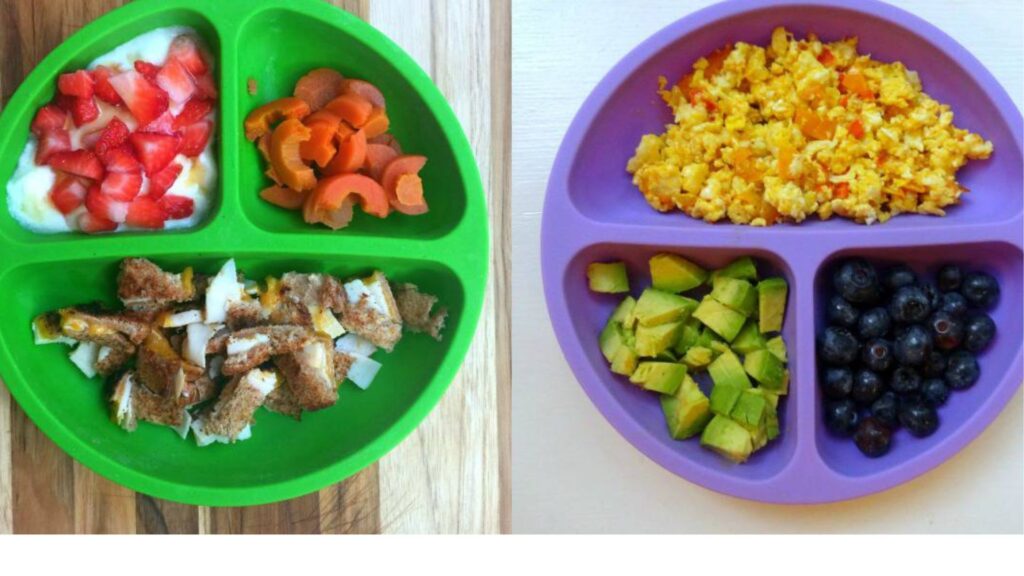Introducing solid foods is an exciting milestone in your baby’s life. During the first year, babies grow rapidly and need a variety of nutrients to support their development. A balanced baby food menu helps ensure your little one gets the right mix of vitamins, minerals, healthy fats, and proteins. In this guide, we’ll walk through how to build a nutritious menu for your baby’s first year, from the first spoonfuls to more textured meals.

Starting Solids: Around 6 Months
Most babies are ready for solid foods around 6 months old. Signs of readiness include sitting up with support, showing interest in food, and being able to swallow soft foods.
First Foods to Try:
-
Single-grain, iron-fortified baby cereal (like oatmeal or rice)
-
Pureed fruits (apple, pear, banana)
-
Pureed vegetables (carrot, sweet potato, squash)
-
Mashed avocado
Tips:
-
Offer one new food at a time and wait 3–5 days before introducing another to monitor for allergies.
-
Start with small portions (1–2 teaspoons) once or twice a day.
7–8 Months: Adding Variety
By this stage, your baby may be ready for thicker textures and a wider variety of foods. You can also introduce protein sources.
Foods to Include:
-
Mashed or pureed meats (chicken, beef, turkey)
-
Lentils, beans, and tofu
-
Whole grain cereals and soft-cooked grains (quinoa, barley)
-
More fruits and vegetables, mixed together or with protein
-
Full-fat plain yogurt (if dairy is tolerated)
Sample Menu:
-
Breakfast: Iron-fortified cereal with mashed banana
-
Lunch: Mashed sweet potato with pureed chicken
-
Snack: Full-fat yogurt with soft pear puree
-
Dinner: Lentils mixed with mashed carrot and rice
9–12 Months: Finger Foods and Texture
As your baby becomes more skilled at chewing and self-feeding, you can introduce soft finger foods and chopped versions of family meals (without added salt or sugar).
Foods to Try:
-
Soft-cooked vegetables cut into small pieces (carrots, zucchini)
-
Small pieces of soft fruits (banana, mango, cooked apple)
-
Small pasta, scrambled eggs, or pancakes
-
Cubes of tofu, soft cheese, or cooked beans
-
Toast sticks with mashed avocado or nut butter (thinly spread)
Sample Menu:
-
Breakfast: Scrambled egg and toast strips with banana slices
-
Lunch: Pasta with soft veggies and a small piece of soft chicken
-
Snack: Cooked apple slices or yogurt with mashed berries
-
Dinner: Mashed lentils, rice, and chopped spinach
Foods to Avoid in the First Year
To keep your baby safe, avoid the following:
-
Honey (risk of botulism)
-
Cow’s milk as a drink (use breastmilk or formula until 12 months)
-
Foods with added salt, sugar, or artificial sweeteners
-
Whole nuts, hard raw veggies, or popcorn (choking hazards)
Keeping the Menu Balanced
A well-rounded baby food menu includes:
-
Iron-rich foods (meat, lentils, fortified cereals)
-
Healthy fats (avocado, full-fat dairy, nut butters)
-
Fruits and vegetables (colorful and varied)
-
Whole grains (oats, brown rice, quinoa)
Aim to offer a mix of textures and flavors each week to help your baby develop a healthy palate and encourage self-feeding skills.
Conclusion
Creating a balanced baby food menu doesn’t need to be complicated. Focus on offering nutrient-rich foods from different food groups and adjusting textures as your baby grows. Remember to keep mealtimes relaxed and fun, and let your baby explore new foods at their own pace.










